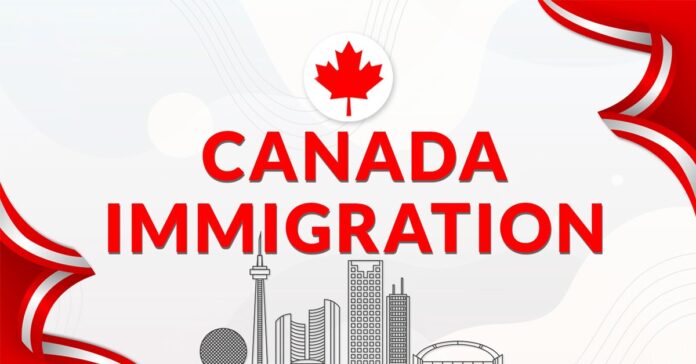Canada’s Immigration New Plan 2025-2027: Latest IRCC Update, PNP, Express Entry
With the backdrop of global flux and internal imperatives, policy officials gathered to map the way for 2025–2027, marking a turning point in Canada’s immigration environment.
The recent meeting of immigration ministers from the federal, provincial, and territory levels implies that the formulation of Canada’s immigration levels plan, a groundbreaking document outlining numerical targets, economic imperatives, and cultural aspirations, is at the center of its paramount significance.
We dive into the contours of Canada’s changing immigration trajectory as we set out on this exploratory voyage, identifying the opportunities and difficulties that lie ahead.
Canada Immigration Landscape: 2025-2027 Policy Outlook
The immigration ministers of Canada met recently to discuss the immigration trajectory of the country for the years 2025–2027. Federal, provincial, and territorial immigration stakeholders came together for this crucial meeting to reaffirm their shared commitment to strengthening Canada’s immigration framework.
This blog delves into the details of Canada’s immigration levels plan, breaking down its fundamental ideas and forecasting what lies ahead for both potential immigrants and decision-makers.
Overview: Canada Immigration Level Plan
The yearly release of the immigration levels plan is a focal point of discussion regarding Canada’s immigration policy. This groundbreaking document, which is usually released in November, acts as the main reference point for immigration goals in several areas, such as family sponsorship and economic immigration.
Apart from merely setting numerical caps, the strategy outlines tactics to drive economic growth, deal with labor market pressures, and support cultural requirements—most notably increasing immigration of francophones.
Key Areas of Focus in 2025-2027
Temporal Dynamics: Striking a Harmonious Balance
At the ministerial meeting, the balance between temporary and permanent residency was a key topic of discussion. The plan by the federal government to reduce the number of temporary residents to just 5% of the population became a hot topic of conversation.
The provincial and territorial counterparts emphasized the necessity of this cut and argued for a more sophisticated strategy that is sensitive to industry-specific labor requirements. In support of a data-driven approach, participants repeated concerns and questions similar to other approaches used to determine international student quotas.
Provincial Nominee Program (PNP): A Nexus of Transition
The Provincial Nominee Program became a central feature of the symposia. Astute observers suggested that it plays a crucial role in easing the shift from short-term visitors to long-term residents, particularly for individuals with desirable skill sets. However, the specter of international students’ mismatched skill acquisition hangs large, sparking discussion over how well they fit into Canada’s work environment.
Forecasts indicated that PNP demand would rise in tandem with the models of temporary residency and volatility. Proposals for increased PNP allotments gained momentum, perceived as a panacea to balance labor shortages with federal goals of reducing temporalities.
Emphasis on Collaborative Imperatives
During the policy summit, there was a loud chorus praising the benefits of smooth coordination between levels of government. Stakeholders reaffirmed the communique’s emphasis on the necessity of synergistic interaction to fully use federal, provincial, and territorial immigration policies. They also emphasized the importance of the provincial nominee program as an example of cooperative effectiveness.
Asylum and Humanitarian Endeavors
Navigating the compassionate imperative
The complex web of humanitarian outreach and asylum adjudication was central to the ministerial mandate. Discussions emphasized the need for more Federal-Provincial collaboration to improve Refugee outcomes, particularly in light of The Crucible of housing scarcity. Notably, Ontario and Quebec became focal points of discussion, indicating the heightened needs in those jurisdictions.
Forecasting Newcomers Trajectories
Navigating the 2025 Immigration Epic
In light of policy recalibrating, potential immigrants are in a position to maneuver across a terrain marked by subtle changes and requirements. Important predictions show the contours of this upcoming epic
Augmented PNP Allocations: A Beacon of Opportunity
The conversation over the declining duration of residency percentages and rising PNP requirements foreshadows a possible development in the way economic migrants enter Canada through the PNP pathway. Provinces demanding higher allotments have welcomed this omen, which attests to a paradigm change in immigration dynamics.
However, desperate provincial actions, such as PEI’s voluntary cutback in PNP quotas, highlight the complex calculations that underlie immigration policy.
Targeted Immigration Priorities: A Continuum of Focus
Canada’s inclination towards focused immigration requirements is shown in a dominant theme that is anticipated to endure until 2025–2027. This trajectory predicts increasingly tailored immigration draws, reflecting local labor demands and sociocultural ambitions. A patchwork of specific requirements is ready to shape the contours of Canada’s immigration environment as decision-makers shift their focus to this complex paradigm.
Conclusion
In the upcoming months, Canada’s immigration Compass is set for a delicate recalibration. The Crucible of policy debate embodies the need to emphasize collaborative imperatives, balance temporal dynamics, and use wisdom and compassion to navigate the humanitarian compass.
A monument to Canada’s unwavering commitment to promoting an open, dynamic, and prosperous society, the augurs foretell a landscape marked by opportunity, collaboration, and targeted imperatives as stakeholders work together to navigate this labyrinth and terrain.
One thing is always quite evident when navigating the complex terrain of Canada’s immigration discourse: the country is on the verge of change. Themes of cooperation, flexibility, and focused imperatives highlight the spirit driving Canada’s immigration approach as officials plot the course for 2025–2027.
The promise of diversity, vibrancy, and prosperity beckons in this Crucible of debate, bearing witness to Canada’s unwavering commitment to creating a dynamic, resilient, and just society. As we conclude this discussion, let’s take the lessons learned and work together to create a future where everyone can prosper and there is opportunity and harmony.
Follow us on Newsnowgh.com to stay updated on the latest information regarding work permits, visa application processes, paths to permanent residency, and visa-sponsored employment.


